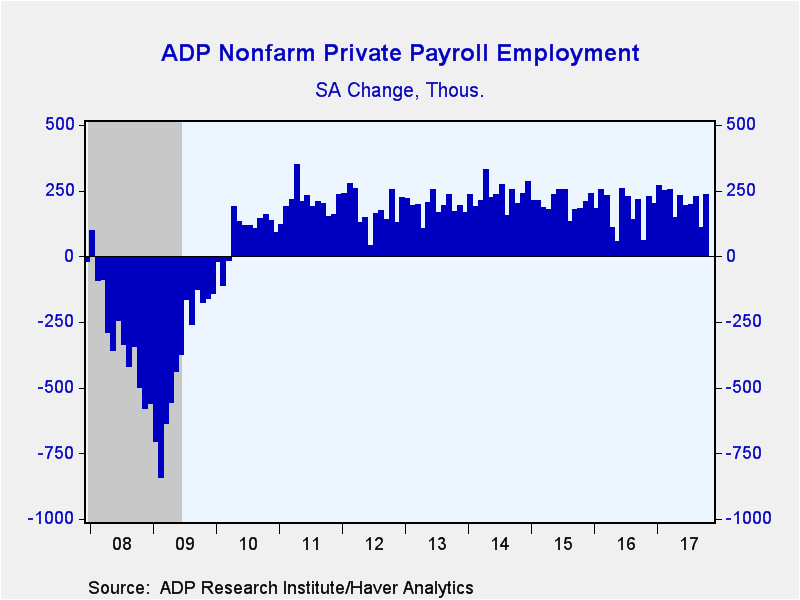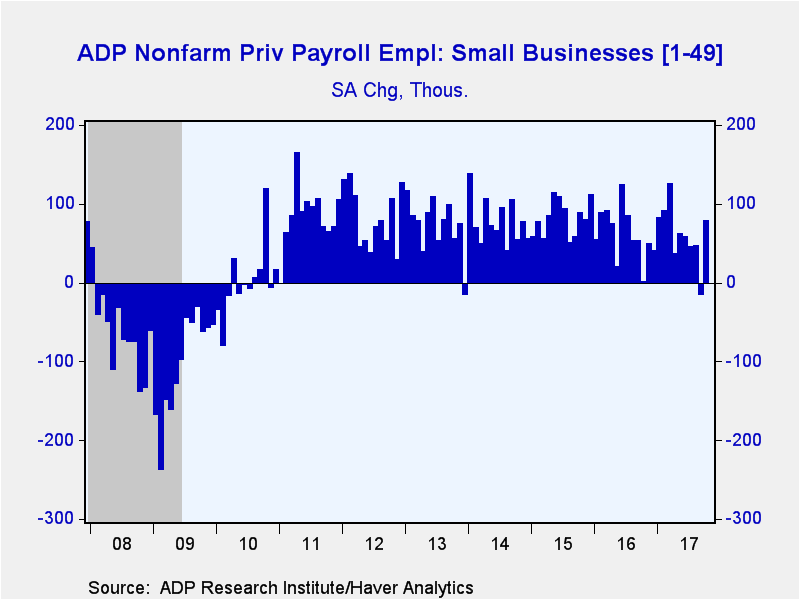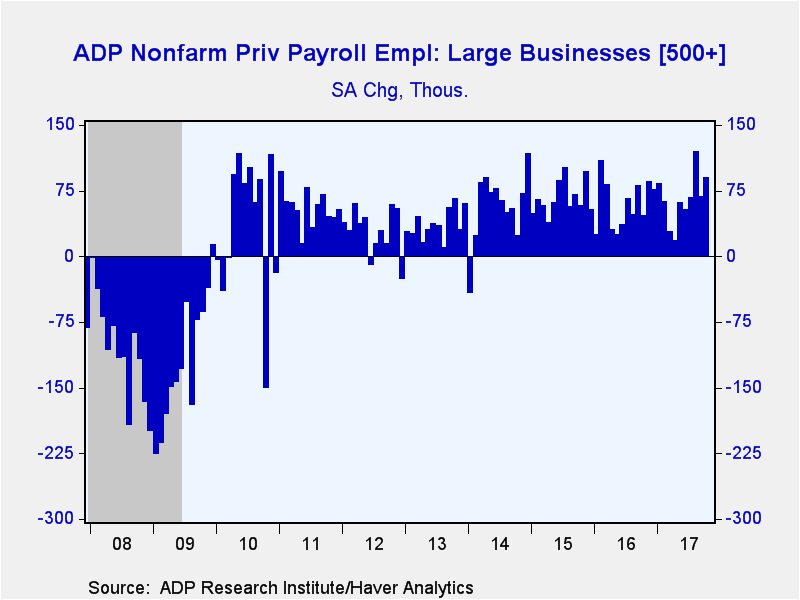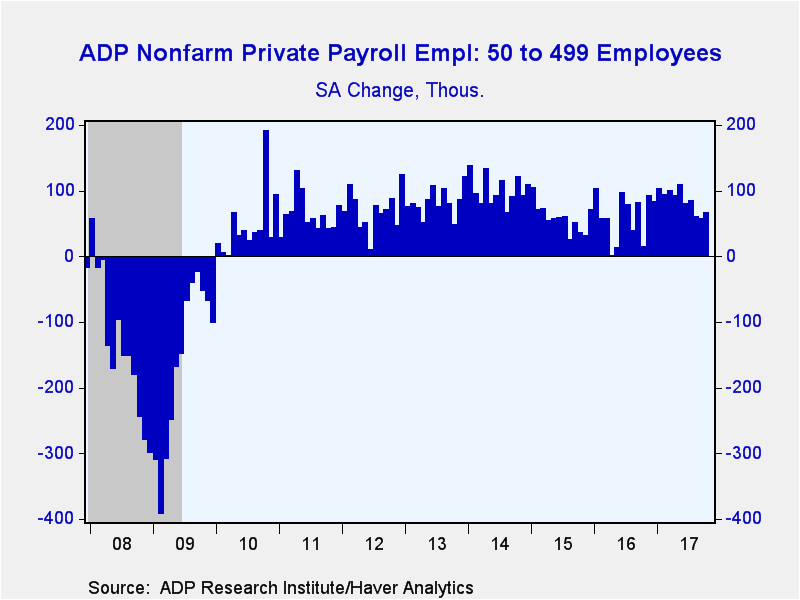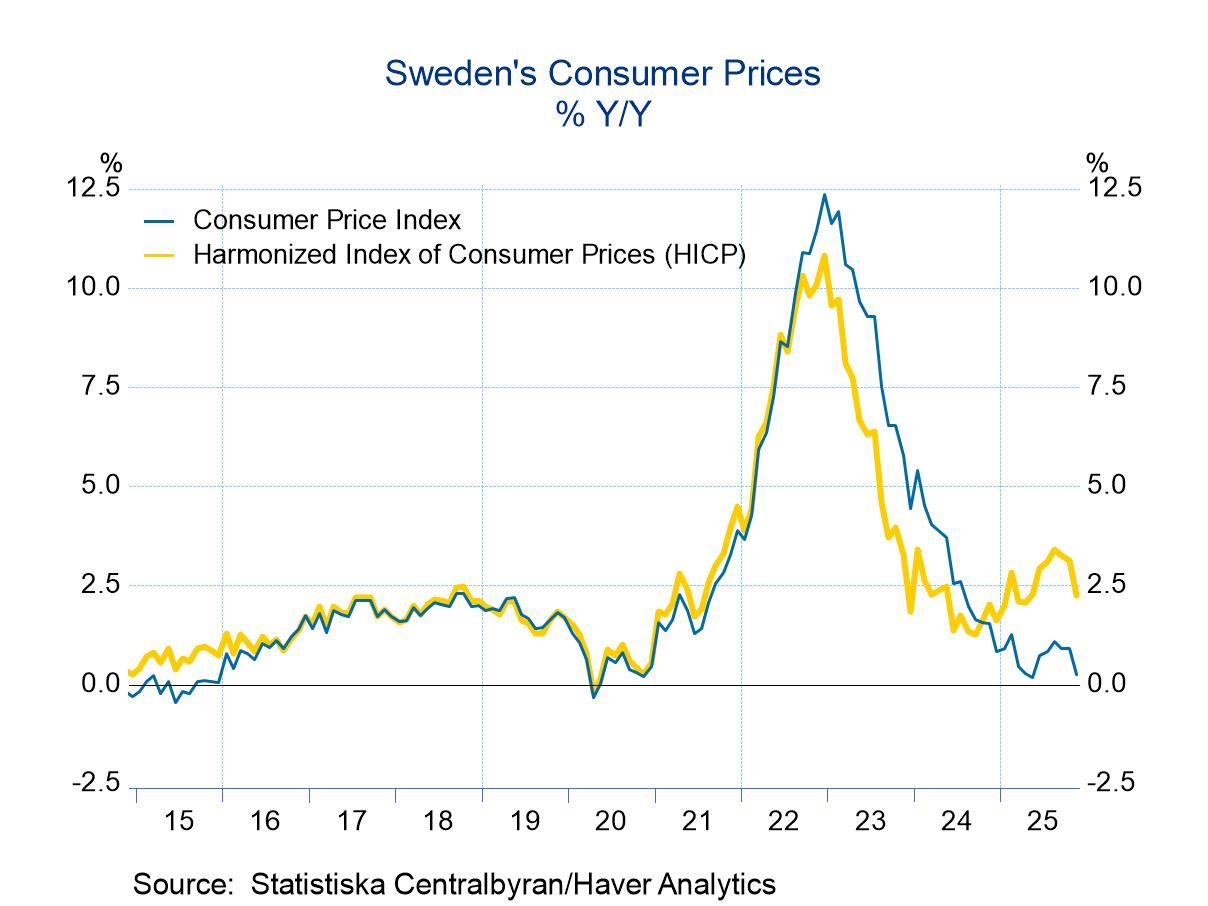 Global| Nov 01 2017
Global| Nov 01 2017U.S. ADP Private Payroll Growth Bounces Back
by:Tom Moeller
|in:Economy in Brief
Summary
The ADP/Moody's National Employment Report indicated that private nonfarm payrolls increased 235,000 (2.1% y/y) during October. Depressed by Hurricanes Harvey & Irma, September's 110,000 gain was revised from 135,000. A 200,000 rise [...]
The ADP/Moody's National Employment Report indicated that private nonfarm payrolls increased 235,000 (2.1% y/y) during October. Depressed by Hurricanes Harvey & Irma, September's 110,000 gain was revised from 135,000. A 200,000 rise had been expected in the Action Economics Forecast Survey. So far this year, payroll gains have averaged 212,000 per month. During the last ten years, there has been a 96% correlation between the change in the ADP figure and the change in nonfarm private-sector payrolls as measured by the Bureau of Labor Statistics.
The Automatic Data Processing Research Institute survey is based on ADP's business payroll transaction system covering 411,000 companies and nearly 24 million employees. The data are processed by Moody's Analytics Inc., then calibrated and aligned with the BLS establishment survey data. The ADP data cover private sector employment only.
Small-sized business payrolls increased 79,000 (1.4% y/y) and have risen an average of 61,000 this year. Large-sized payrolls increased a firm 90,000 (2.9% y/y), up from 65,000 averaged this year. Medium-sized payrolls increased a 66,000 (2.3% y/y), weaker than the average 85,000 in 2017.
Employment in the goods-producing sector rose 85,000 (2.7% y/y), up from the 51,000 average in the first 10 months of the year. Construction sector payrolls increased 62,000 (4.9% y/y), double the 10-month average. Jobs in the factory sector gained an improved 22,000 (1.4% y/y).
Private service-sector payrolls increased 150,000 (1.9% y/y), reduced from the 161,000 average from January through October. Professional & business services payrolls strengthened 109,000 (3.7% y/y), up from the 64,000 average this year. The number of leisure & hospitality jobs rose 45,000 (2.4% y/y) following September's 1,000 uptick. Education & health services employment rose a steady 39,000 (2.0% y/y). Financial activities jobs rose just 9,000 (1.7% y/y). The number of trade, transportation and utilities jobs declined a sharp 50,000 (+0.8% y/y). Employment in the information sector fell 27,000 (-2.2% y/y), where payrolls have been falling since early last year.
The ADP National Employment Report data are maintained in Haver's USECON database; historical figures date back to April 2001 for the total and industry breakdown, and back to January 2005 for the business size breakout. The expectation figure is available in Haver's AS1REPNA database.
| ADP/Moody's National Employment Rep | Oct | Sep | Aug | Oct Y/Y | 2016 | 2015 | 2014 |
|---|---|---|---|---|---|---|---|
| Nonfarm Private Payroll Employment (m/m chg, 000s) | 235 | 110 | 228 | 2.1% | 1.9% | 2.3% | 2.2% |
| Small Payroll (1-49) | 79 | -16 | 47 | 1.4 | 1.9 | 1.9 | 1.8 |
| Medium Payroll (50-499) | 66 | 58 | 61 | 2.3 | 1.5 | 2.3 | 2.8 |
| Large Payroll (>500) | 90 | 68 | 120 | 2.9 | 2.8 | 3.0 | 2.1 |
| Goods-Producing | 85 | 44 | 47 | 2.7 | 0.8 | 2.0 | 2.6 |
| Construction | 62 | 32 | 21 | 4.9 | 4.1 | 5.2 | 4.9 |
| Manufacturing | 22 | 12 | 24 | 1.4 | 0.2 | 1.2 | 1.4 |
| Service-Producing | 150 | 65 | 182 | 1.9 | 2.2 | 2.3 | 2.2 |
Tom Moeller
AuthorMore in Author Profile »Prior to joining Haver Analytics in 2000, Mr. Moeller worked as the Economist at Chancellor Capital Management from 1985 to 1999. There, he developed comprehensive economic forecasts and interpreted economic data for equity and fixed income portfolio managers. Also at Chancellor, Mr. Moeller worked as an equity analyst and was responsible for researching and rating companies in the economically sensitive automobile and housing industries for investment in Chancellor’s equity portfolio. Prior to joining Chancellor, Mr. Moeller was an Economist at Citibank from 1979 to 1984. He also analyzed pricing behavior in the metals industry for the Council on Wage and Price Stability in Washington, D.C. In 1999, Mr. Moeller received the award for most accurate forecast from the Forecasters' Club of New York. From 1990 to 1992 he was President of the New York Association for Business Economists. Mr. Moeller earned an M.B.A. in Finance from Fordham University, where he graduated in 1987. He holds a Bachelor of Arts in Economics from George Washington University.


